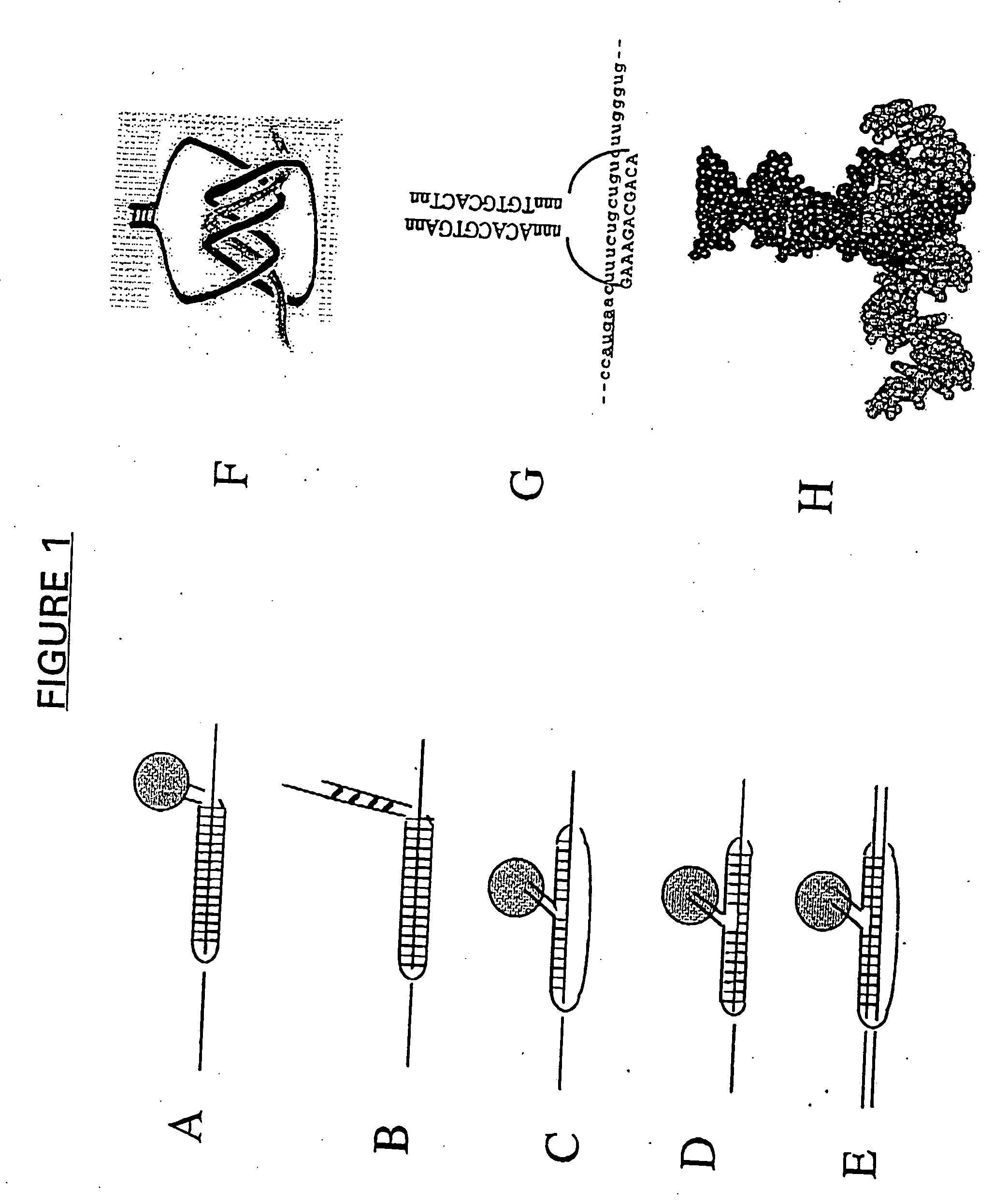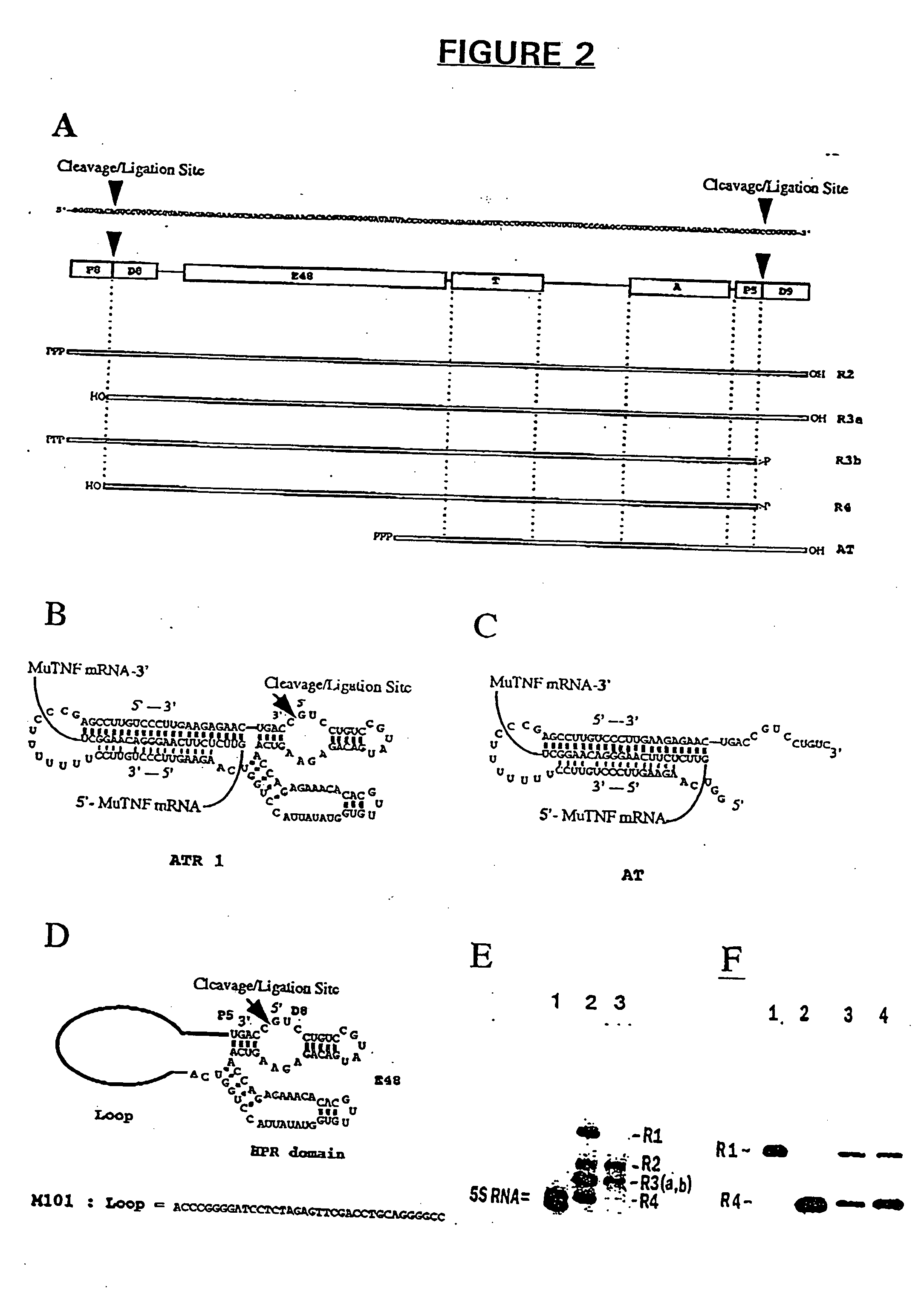Antisense and antigene therapeutics with improved binding properties and methods for their use
a technology of antigenes and oligonucleotides, applied in the field of antisense and antigene oligonucleotides, can solve the problems of difficult cell-specific delivery, high cost of automated synthetic methods for producing antisense oligonucleotides, and inability to control the level of target cells, etc., to achieve improved antisense and antigene oligonucleotide composition, high resistance to dissociation, and the effect of resistan
- Summary
- Abstract
- Description
- Claims
- Application Information
AI Technical Summary
Benefits of technology
Problems solved by technology
Method used
Image
Examples
example 1
Antisense-Mediated Down-Regulation of Tumor Necrosis Factor Alpha (TNFα)
[0081] Tumor necrosis factor alpha (TNFα) plays an important role in the immune response to infection. However, exaggerated production of this cytokine (also called cachetin) can lead to cytotoxicity, organ failure and death in the case of septic shock (see, e.g., Beutler and Grau, Crit. Care Med. 21:S423-435 (1993) and Dinarello, J. Infect. Dis. 163:1177-1184 (1991)). Moreover, TNFα, along with interleukin-1, has been shown to mediate the pathogenesis of chronic inflammatory joint diseases such as arthritis (Probert et al., Eur. J. Immunol. 25:1794-1797 (1995)) as well as cachexia, or wasting syndrome (Tracey and Cerami, Ann. N.Y. Acad. Sci. 569:211-218 (1989)). Antibodies directed against TNFα have been shown to protect against the lethal effects of septic shock and cachexia (Beutler and Grau (1993), supra and Tracey and Cerami (1989), supra), indicating that TNFα is a good candidate for antisense and antigen...
example ii
Inhibition of TNFα Secretion by ATR Constructs
[0110] The ability of various anti-TNFα antisense constructs to inhibit the secretion of TNFα from RAW264.7 cells was determined. Specifically, 2×105 RAW264.7 cells were treated with 4.5 μg of the antisense construct ATR 1, ATR 16a, ATR 16b or ALR 229 or control RNA (m101) as described in Section I-F above. The RNA was complexed with Lipofectamine at a 3:3:1 charge ratio for 2 hours in 1 ml DMEM. TNFα levels in supernatents were measured by specific ELISA at increasing intervals after stimulation with 100 ng / ml LPS. The results of these experiments are presented in FIG. 10.
[0111] As shown in FIG. 10, each of the padlock RNAs ATR 1, ATR 16a, ATR 16b and ALR 229, were able to significantly inhibit the secretion of the TNFα protein by RAW 264.7 cells grown in culture. In contrast, cells treated with control RNA (m101) or untreated cells still produced TNFα at significantly higher levels than the antisense treated cells. These results demo...
example iii
Inhibition of TNFα in Mice
[0118] We chose our most effective padlock RNA in the cell culture assay to test for in vivo efficacy in mice (FIG. 14). As with the in vitro assays, ALR 229 was complexed with Lipofectamine and delivered i.p., after which macrophages were recovered and assayed in vitro for TNFα production following LPS stimulation as described in the brief description of FIG. 14. Although there was some nonspecific stimulation of TNFα secretion apparently due to the proinflammatory effects of Lipofectamine, mice that had received ALR 229 consistently showed half the level of TNFα production shown by mice that had received a control ATR that was directed at an irrelevant gene (human VCAM-1; the human VCAM-1 ATR is not expected to bind to the mouse VCAM gene or any other gene). We consider this strong evidence that ALR 229 has a significant antisense activity in vivo. It also suggests that Lipofectamine, and perhaps cationic lipids in general, may not be the best vehicle fo...
PUM
| Property | Measurement | Unit |
|---|---|---|
| pH | aaaaa | aaaaa |
| molar ratio | aaaaa | aaaaa |
| Tm | aaaaa | aaaaa |
Abstract
Description
Claims
Application Information
 Login to View More
Login to View More - R&D
- Intellectual Property
- Life Sciences
- Materials
- Tech Scout
- Unparalleled Data Quality
- Higher Quality Content
- 60% Fewer Hallucinations
Browse by: Latest US Patents, China's latest patents, Technical Efficacy Thesaurus, Application Domain, Technology Topic, Popular Technical Reports.
© 2025 PatSnap. All rights reserved.Legal|Privacy policy|Modern Slavery Act Transparency Statement|Sitemap|About US| Contact US: help@patsnap.com



